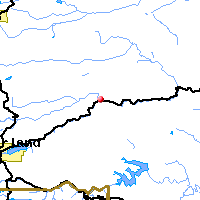Specific Conductance is a measure of how well water can pass an electrical current. It is an indirect measure of the presence of inorganic dissolved solids, such as chloride, nitrate, sulfate, phosphate, sodium, magnesium, calcium, and iron. These substances conduct electricity because they are negatively or positively charged when dissolved in water. The concentration of dissolved solids, or the conductivity, is affected by the bedrock and soil in the watershed. It is also affected by human influences. For example, agricultural runoff can raise conductivity because of the presence of phosphate and nitrate. | ||||||||||
| ||||||||||
| ||||||||||
| Downstream Site: North Boulder Creek at Boulder Falls | ||||||||||
| Upstream Site: Boulder Creek at Orodell | ||||||||||
| ||||||||||
Preliminary Data - subject to revision | ||||||||||
Return to the BASIN water quality catalogReturn to the BASIN environmental data catalog | ||||||||||
INVITATION BASIN is a community project actively seeking public participation. We appreciate all feedback and welcome comments, suggestions and contributions. To find out more about how you can be involved, click here. | ||||||||||
|
About BASIN | Attribution | Feedback | Search | ||||||||||

